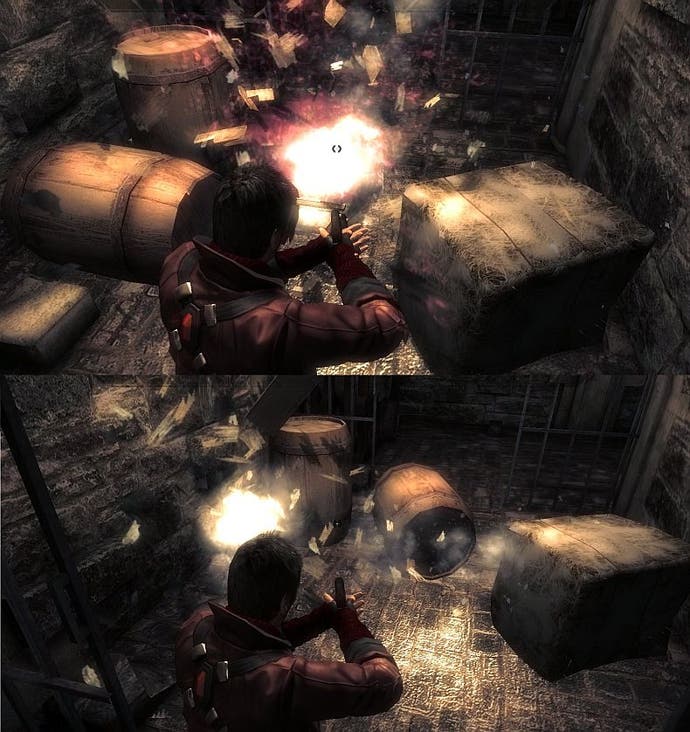Physical Education
What went wrong and what next for the beleaguered PhysX card.
Testing a theory, I conducted an experiment. Calling up a friend who plays PC games but whose technical knowledge ends at realising that he needs to buy (or beg me to build for him) a faster machine every few years, I enquired as to whether he had a physics card. As predicted, he was frightened and confused by the question. Without one, he asked, was his PC somehow incapable of physics? But he could use the gravity gun in Half-Life 2. That had physics, right? So what was he missing, oh God what was he missing? I might as well have asked him if his rig had a water card, or a skin processor. Attempts to explain the purpose of the physics card didn't help greatly, and only further highlighted one of the factors keeping the nascent tech dead in the water. The Ageia PhysX physics accelerator card is trying to fix a problem that no-one thinks they have.
This week saw the release of Cellfactor: Revolution, a game originally intended to be a full-blooded celebration of PhysX. If you've played it, without or without an add-in physics card, you'll know that, despite some impressive parlour tricks, it's not a game - it's just a fancy tech demo riddled with problems. Given the year old PhysX's failure to set the world on non-framerate-bothering fire, it's all-too-easy to speculate that Cellfactor's original ambition has been brutally castrated. Why spend all that cash and developer brainjuice on a promotional tool for something that seems to have failed already? The card had a disastrous start last year. Its first big game, Ghost Recon: Advanced Warfighter, initially ran worse when PhysXed up, while a public beta of Cellfactor was quickly hacked to run almost all its gimmicks without the card. Since then, it's all been a bit quiet, and there's very few outside of its parent company Aegia who currently feel the physics processing unit has a long and prosperous future.
PhysX, of course, isn't dead yet, and even if it does pass away quietly in the night, Ageia will survive for a while offering its software physics engine to developers as a rival to the more established Havok. This offers the same kind of floppy bodies and bouncing crates as is possible using the hardware acceleration of the card, but on a less grand scale and at greater in-game speed cost. At any rate, this piece is not intended to be a burial, but rather a fitness test for what may well turn out to be a final tour of duty.
There are only a handful of games that support PhysX hardware - in any other, it just sits there sucking up electricity and making fan noise. It's not a particularly impressive list of games - G.R.A.W. and City of Heroes are the only two that crawl anywhere near triple-A status. Forgettable FPSes like Bet on Soldier and Infernal bulk up the roster slightly. That latter is not a game I'd hoped to ever play again, but oddly offers the most visceral demonstration of a PhysX card outside of Cellfactor. It's intermittent and inconsequential, though. For instance, shoot an in-game barrel without the card, and a few chunks and splinters of wood spray across the room. Shoot it with the card and, as well as some extra wood bits, the wine inside the barrel also sprays out - as some bizarre purple ectoplasm, which disappears almost instantly.

This highlights two pretty major problems with the PhysX concept, regardless of whether or not games to take advantage of it exist. Firstly, a lack of interactivity - a great deal of the PhysX effects are effects only, not physical objects. Even where the accelerated bits and bobs can be made interactive, it's a headache for developers - their game will then behave differently on systems that do and don't have a PhysX card. This could grant one player an advantage over another; is this a price worth paying to have more barrels rolling down a hill at once? To become a success, PhysX needs games based upon rather than merely aided by its abilities, but, as the smallness and brokenness of Cellfactor demonstrates, such a game won't get made because not enough people have PhysX cards. Catch-22.

